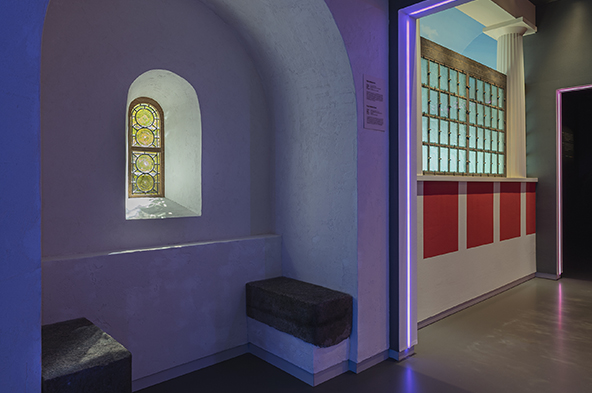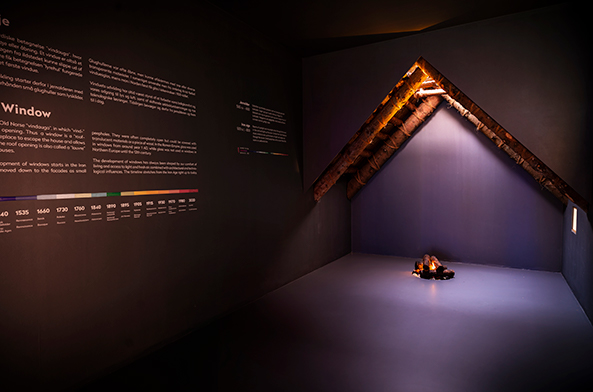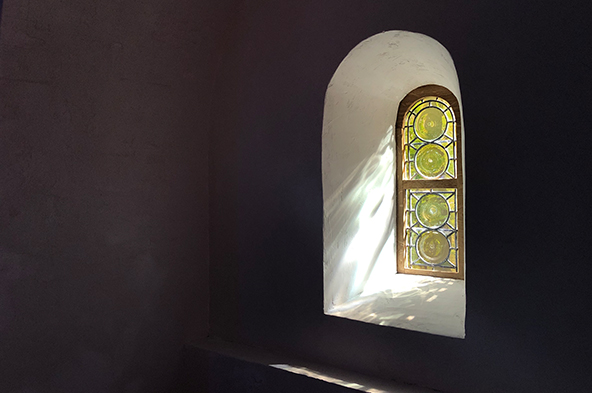Three stylistic periods have been added to the Time Tunnel - the Iron Age, Roman time and the Romanesque Middle Ages - allowing visitors to experience the light through history's first windows.
Iron Age
Displayed in the Iron Age room is history's first window - the louvre - which is an opening in the roof that allows smoke from the hearth to escape the building. In Old Norse the louvre was called a “vindauga”, in which “vind-” means roof and “auga” means eye or opening. Thus, a window is a “roof-opening”. The modern word "window" is derived from "vindauga".
Roman times
In the museum a very special window, which could shelter from sea breezes from the Gulf of Naples, is displayed. The exhibited window is a reconstruction of a window from the colonnade of Villa dei Misteri in Pompei. The earliest archeological findings of windows with glass panes were indeed found here in the Roman cities of Pompei and Herculaneum. The window has bronze frames and fittings and the windowpanes are copies of roman cast glass.
Romanesque Middle Ages
The earliest medieval windows were built in romanesque style, with a characteristic upper frame with a rounded arch, that would have supported the heavy brick walls of the buildings of the time. Displayed in the museum is a reconstruction of a window from Tveje-Merløse church with an oak frame and crown glass windowpanes. Remains from the original window are exhibited at the National Museum of Denmark and feature fragments of a circular motif in the original leadlight.



